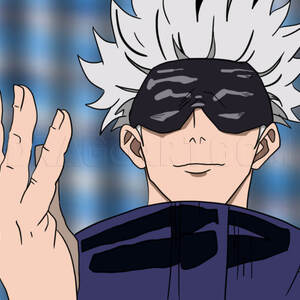1
This first step is the reference picture I used for sketching. I turned the color picture to black and white so I could see the tones and values and sketch them into the drawing. And once you have your picture on the computer, it's easy to make large
2
MECHANICAL PENCILS - You want to know what pencils I use? Here they are along with how their lead appears in the crosshatch, line, and circular shading. They start from light (H) to dark (B). ------ 9B'S & BLENDERS - Click on the picture with my very
3
Now let's start sketching! First start with these interesting shapes. Start with the curve, like an antennea. Lightly sketch these lines please. Then do your circle slightly underneath the curve. Next draw in the lines for eyes and nose placement. Co
4
Draw in your cat's ears, left side of neck and feet. Notice the cat isn't sitting straight up. Try to mimic the curve of these lines and the feet at a slant. Draw lightly and you can erase anything that doesn't look right. Now draw it in correctly
5
Your cat is shaping up. Draw in the eyes, nose, mouth and chin. Then the rounded torso and chest hairs. Don't forget the other side of the cat.
6
You are actually completing the outline. Draw in the hair and markings of the cat, lightly. Curve those whiskers. I would suggest you add the rock bench and board because it gives the cat the illusion of sitting down and part of the cat's body is beh
8
Those of you who would like to do the line drawing, here's the cat with markings. The following steps will include more tips and steps on how to sketch or draw the penciled cat picture.
9
Working at a university in the audio visual department as an artist taught me lots of professional terms. One is "thumbnail sketch." Sometimes I would receive clients that needed logos, pamphlets, murals, silk-screened t-shirts done and I would draw
10
TONE-SHADING-TEXTURE - Click on this picture to see the basic shapes that make up most of nature. Adding tone, shading & texture makes your 2-dimensional picture seem to pop out like a 3-dimensional one!
11
Overhand is great for writing or fine details. Underhand is like rollerblading through walking traffic--it goes fast! Try tonal shading. It's a great exercise.
12
Here are more exercise in case you want to practice for more realism. Heyyyy, I practice too! *giggle* And don't worry about crocked lines. That's all part of the practice.
13
Here is another challenge. Remember the days in school when you had to swim, write, type, learn quicker? Sketching and doodling is that kind of exercise too. Draw three strokes really fast in that second. Follow those arrows on the line strokes. Star
14
Here is how the pencil outline looks without the the guidelines. If you haven't already, erase those guidelines and see if your cat looks a little like this one.
15
My advice is to take your time drawing in the markings. Start with the No. 2 pencil and make sure it is sharp. Draw in the tiny short hairs in short strokes. Top of the head and eyes are the basic areas to begin.
16
From left to right sketch in the markings add heavier pressure to your No.2 pencil. I used a 2B 0.7mm mechanical pencil to get those tiny strokes. Try using those short strokes for the cat's hair under eyes and over face. Also start on the neck, legs
17
Work your pencil down the cat's torso to the feet. Look at the reference picture and notice that your picture is still light. Right now we're sketching in lines and strokes in the direction of the hair. Don't worry that your tone does not match the r
18
Do a first blend on the drawing with a blending stump. You will not lose your details if you avoid the eyes and nose. As you go over the darker markings, go in the direction of the hair--as if you are combing the cat.
19
I gave in and wanted to blend in the hairs more so I softly brushed over the cat's torso area with a tissue. Very, very gently go over the face, but don't lose your details.
20
Pencil in a little shading in the background. And if you have sandpaper, use that for the stone bench part. I used a 180-grit sandpaper I got from the hardware store under a dollar (USD). Otherwise, dotting your bench takes much longer.
21
Okay, say it! I cheated! (Just kidding) I wanted my kitty-cat to pop out so I added the famous opaque Titanium White Acrylic Paint. *NEW TIP* First I sprayed my picture with a workable fixative to keep the graphite from mixing with the paint!*NEW TIP
Comments 0
Details
September 13, 2011
Description: This is a first! I'm drawing an animal! This time I'm introducing the feline of the animal kingdom - a cat. This cat is between a kitten and an older cat. I couldn't resist doing this picture because it is from a DevientArt member. I held a contest in my account at DevientArt.com to get permission for using animal photos from original photographers or people so I would not be in copyright infringement. She is one of the two First Place Winners. Her name is Aika-san and she called the picture, "What?" So I can show this photo that is a reference picture. In this tutorial we are going to learn "How to Sketch a Cat." I hope you will enjoy it.






















































































